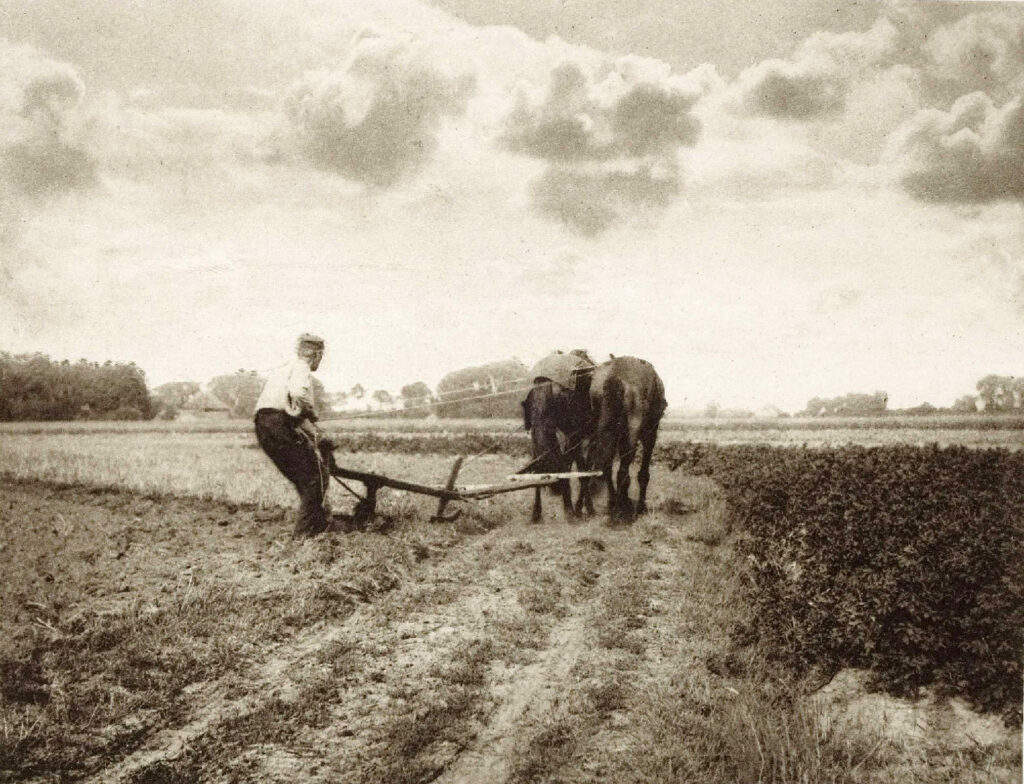1 The roots of organic agriculture
There was a time in the not-so-distant past when all agriculture was organic. Since the discovery, development, and availability of antibiotics, pesticides, and fertilizers in the 1940s, these new materials/resources became commonplace in agriculture and livestock production. American organic farming has roots in the humus-farming movement of the 1920s-1950s. Humus is the dark, organic material that forms in soil when plant and animal matter decays without the assistance of commercial synthetic fertilizers or pesticides. This occurs in farms that include livestock, food crops, feed crops, and green manures (Coffey & Baier, 2012).
The 1960s through the 1980s saw the growth of organic agriculture as public concern over pesticides grew. During this time, third-party organic certifiers carried out independent assessments to verify compliance but had an inconsistent set of standards. This changed in 1990 when the U.S. Congress passed the Organic Foods Production Act. Then, in 1992, the National Organic Program (NOP), a federal regulatory program that develops and enforces national standards for organic agricultural products sold in the U.S., was established. They also created an advisory board – the National Organic Standards Board (NOSB), which makes recommendations to the on new regulations and standards. In 2002 the NOP started to accredit certifiers.
USDA’s National Organic Program NOP
The NOP oversees the production standards. It also maintains the National List of Allowed and Prohibited Substances, which specifies approved synthetic substances that may be used in organic production and natural substances that may not be used (7 CFR 205.603).
National Organic Standards Board NOSB
A 15-member board that makes recommendations to the NOP about materials and practices that may be used in organic production. The board meets twice a year to hear public comments, continually evaluating and improving the standards as new materials become available and new information comes to light. The NOSB includes farmers, processors, retailers, environmentalists, scientists, consumers, and representatives of certification agencies.
Organic certification agencies
The USDA accredits certification agencies to act on its behalf to ensure that farms and processing facilities are complying with organic regulations. These agencies have the power to grant or revoke organic certification. Farmers can choose a certification agency based on a number of factors. In addition to determining certification status, the agency keeps the farmer/processor updated about changes to regulations.
Organic inspectors
Trained individuals who visit farms to audit records, inspect fields and facilities and verify producers and processors are following NOP rules. They do not grant or revoke certification. They provide the information to the certification agency, which decides. Inspectors who are inspecting certified organic operations are not allowed to recommend farming practices or products (This may be in contrast with inspectors for alternative certifications who can give insight to farmers being inspected).
United States Department of Agriculture
United State Department of Agriculture’s National Organic Program

 The 1960s through the 1980s saw the growth of organic agriculture as public concern over pesticides grew. During this time, t
The 1960s through the 1980s saw the growth of organic agriculture as public concern over pesticides grew. During this time, t